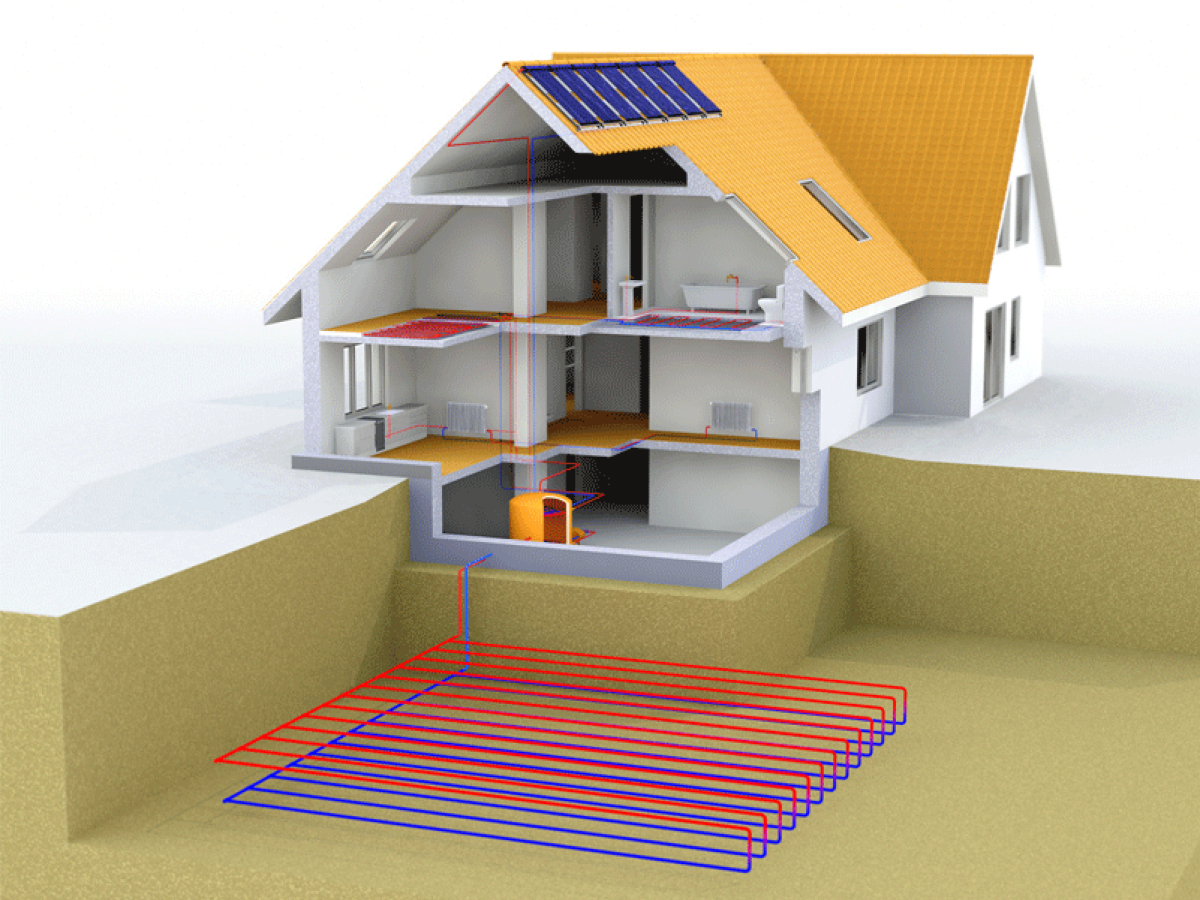Focus Projects
This article is over 3 years old
Photovoltaics applied to geothermal heat pump: a Finnish study to reduce DHW heating costs
A research group from Finland’s LUT University has studied 4 different control methods for DHW heating

Photovoltaic systems are spreading rapidly throughout the world, with total installed capacity amounting to over 627 GWp. However, despite the expansion of these systems, practical difficulties to the use of solar power still exist due to the intermittent nature of the power. This results from the incongruity between the diurnal variations of the demand and supply of electricity.
A group of researchers from the Lappeenranta University of Technology (LUT) in Finland applied a PV system to a geothermal heat pump and studied a series of control methods to assess its domestic hot water (DHW) heating capacity.
Solar capacity in Finland has grown rapidly since 2015, with a few differences across regions because of greater variations in daylight hours in the northern latitudes, which is why solar systems have spread in the country’s southernmost areas.
Heat pumps have also become popular in Finland over the last few years, especially in new constructions, where they represent the primary domestic heating technology, replacing polluting gas- and petroleum-based systems. For a Finnish family, domestic water heating is, on average, the activity requiring the most amount of energy, accounting for 15% of total energy use. This is the basis for LUT University’s research, whose aim was to demonstrate the potential of PV applied to a geothermal heat pump by developing a control method to reduce the cost of DHW.
The article published in the magazine Science outlines the working context and the 4 different control methods taken into consideration for a building equipped with geothermal heat pump (also known as ground source heat pump or “GSHP”) and rooftop PV system with hot water tank storage.
The main control method developed in this study aims at minimising domestic water heating costs by pairing the electricity market data of Nord Pool (a European power exchange) with a PV generation forecast model.
Energy consumption of DHW was calculated based on a typical 4-member family household with a DHW consumption of 200 litres per day and assuming that the inlet cold water temperature was 10°C and the outlet hot water temperature was 60°C (in Finland the hot water temperature must be at least 55°C and not exceed 65°C in the pipes by law).
On the basis of this data, the DHW demand of the home used in the simulation was calculated to be 11.64 kWh per day, including a 500-litre capacity DHW boiler. In the analysis, the electricity generated by the PV system was used to meet baseload demand requirements before being made available for domestic water heating, while space heating was not within the scope of the study.
Supported by the Nessling Foundation and the Strategic Research Council of the Academy of Finland, the work demonstrates, through the results obtained between June and September 2020, that the optimum cost control method developed by the researchers reduces DHW costs effectively, in comparison to the other three control cases analysed.
A group of researchers from the Lappeenranta University of Technology (LUT) in Finland applied a PV system to a geothermal heat pump and studied a series of control methods to assess its domestic hot water (DHW) heating capacity.
Solar capacity in Finland has grown rapidly since 2015, with a few differences across regions because of greater variations in daylight hours in the northern latitudes, which is why solar systems have spread in the country’s southernmost areas.
Heat pumps have also become popular in Finland over the last few years, especially in new constructions, where they represent the primary domestic heating technology, replacing polluting gas- and petroleum-based systems. For a Finnish family, domestic water heating is, on average, the activity requiring the most amount of energy, accounting for 15% of total energy use. This is the basis for LUT University’s research, whose aim was to demonstrate the potential of PV applied to a geothermal heat pump by developing a control method to reduce the cost of DHW.
The article published in the magazine Science outlines the working context and the 4 different control methods taken into consideration for a building equipped with geothermal heat pump (also known as ground source heat pump or “GSHP”) and rooftop PV system with hot water tank storage.
The main control method developed in this study aims at minimising domestic water heating costs by pairing the electricity market data of Nord Pool (a European power exchange) with a PV generation forecast model.
Energy consumption of DHW was calculated based on a typical 4-member family household with a DHW consumption of 200 litres per day and assuming that the inlet cold water temperature was 10°C and the outlet hot water temperature was 60°C (in Finland the hot water temperature must be at least 55°C and not exceed 65°C in the pipes by law).
On the basis of this data, the DHW demand of the home used in the simulation was calculated to be 11.64 kWh per day, including a 500-litre capacity DHW boiler. In the analysis, the electricity generated by the PV system was used to meet baseload demand requirements before being made available for domestic water heating, while space heating was not within the scope of the study.
Supported by the Nessling Foundation and the Strategic Research Council of the Academy of Finland, the work demonstrates, through the results obtained between June and September 2020, that the optimum cost control method developed by the researchers reduces DHW costs effectively, in comparison to the other three control cases analysed.


